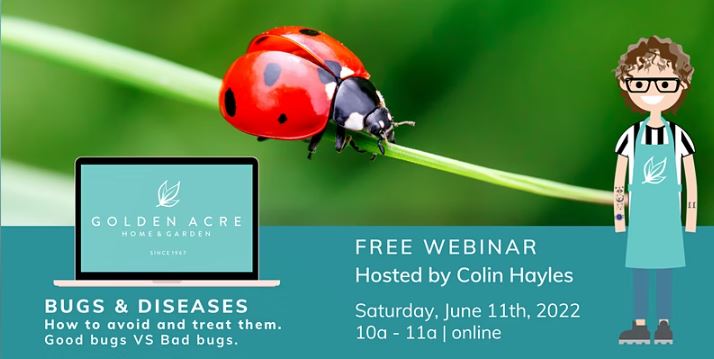Hello gardener!
No matter what kind of garden you choose to cultivate, there will always be the possibility of attracting bugs and disease. Sometimes you attract trouble from the weather, watering practices, a food source, or even from something airborne from a neighboring yard. We’re here to prepare you for whatever gets thrown at you. If you suspect your plant is suffering from a disease or pest issue, feel free to reach out to us in store, on social media, or email us at info@goldenacre.ca.
Big thank you to everyone who joined us for our webinar! We ran into some wifi issues at the end, but if you have a question about garden bugs and diseases, please send us an email and we’ll help you personally. info@goldenacre.ca
We also really love this prairie focused book called The Prairie Gardener’s Go-To for Pests & Diseases by Janet Melrose and Sheryl Normandeau. Shop for it here
DISEASES
Fungal diseases are common in the garden, but there’s also bacterial disease and physiological disease that may pop up. Keeping your garden clean, sanitizing tools at the beginning of the season, and keeping plants healthy are all great ways to avoid disease. Of course, sometimes you can do it all and still run into issues. Let’s explore some of the main points from today’s presentation
Fungal Diseases
Treatment
- Prune the diseased sections and dispose of right away. Disinfect tools afterward.
- Avoid dense and wet mulches where fungus can breed.
- Treat fungus early to avoid spread. Many fungicides are preventative measures. It’s a good idea to treat before symptoms develop.
- Also apply fungicides on a dry day before watering so the infected parts are free of any water barriers.
- Be aware that not all plants can be saved. We will do out best to help you through any fungal crisis, but sometimes it be time to dispose of the plant before more damage is done to the rest of your garden.
From left to right: Powdery Mildew, Black Knot, Black Spot, Rust, Root Rot, Botrytis Blight
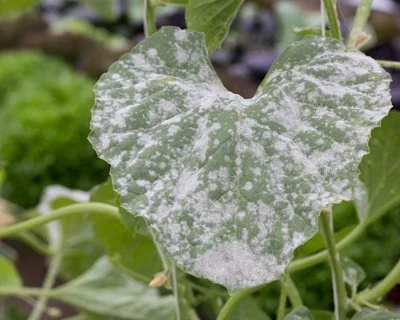
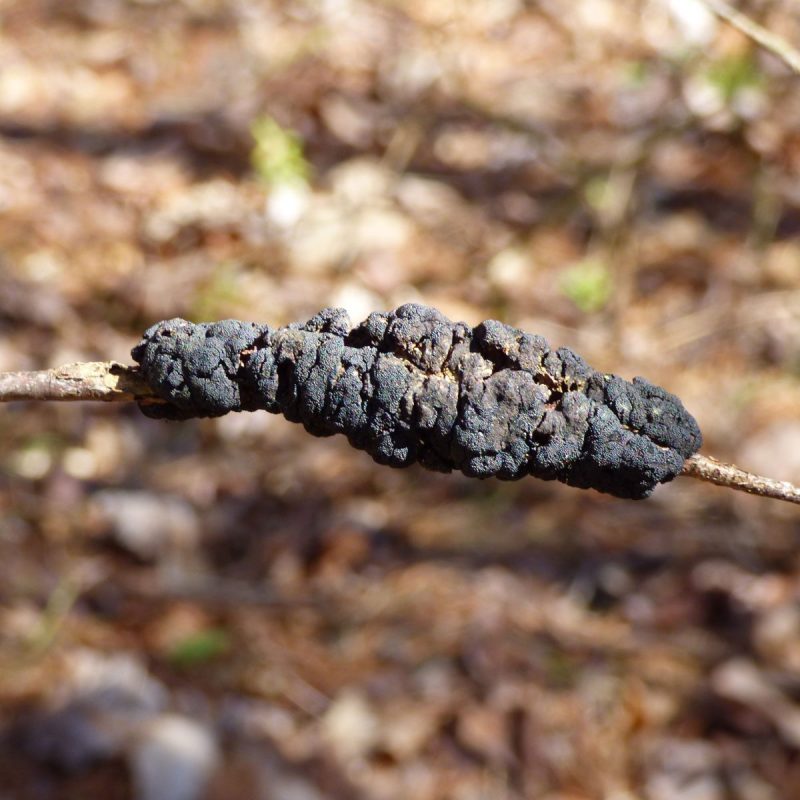

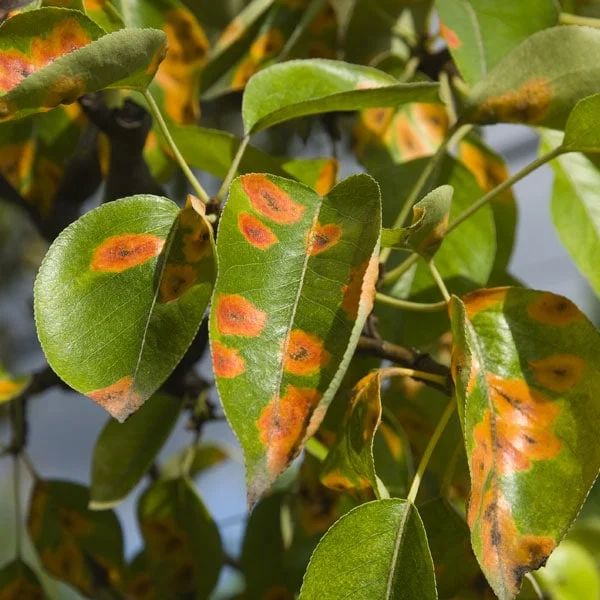
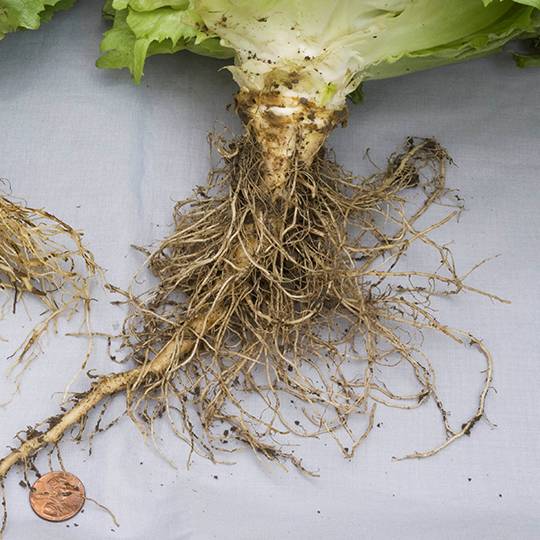
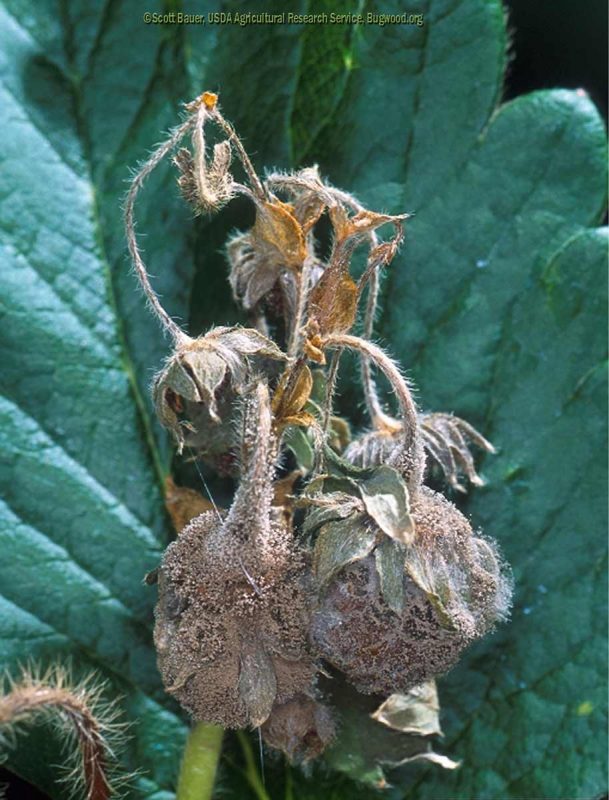
Bacterial Diseases
These types of diseases are basically untreatable, so prevention is super important. Especially in veggies, there are many plant varieties that are resistant, like scab-resistant potatoes. Also, look at rotating your crops to ensure your plants are getting proper nutrition and keep healthy. Pruning can help, as well as keeping the leaves, fruits, and stems dry when watering.
From left to right: Fireblight, Canker, Wilt, Gall, Soft Rot, Scab

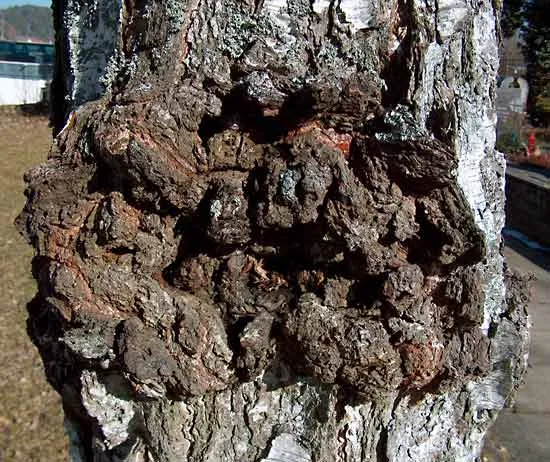




Physiological Diseases
If your plant develops this kind of disease, it may not be physically happy. Treatment for this is the easiest of all the diseases as it usually requires things like moving the plant for better sun exposure, or adding more nutrients like calcium to tomato plants. A very common physiological disease is blossom end rot which is seen in the photo below. This commonly occurs in tomato plants and it’s a sign that the plant isn’t receiving enough calcium. It’s easy to treat though, with a calcium enrichment product.

BUGS
As Colin said, bugs, both good and bad, are inevitable. The garden is a living ecosystem going through constant change. One of the great things about bugs, is how they reflect the overall health of your garden. A spiders web can indicate what kind of bad bugs are hanging around. An increase of lady bugs may indicate an aphid infestation. There are loooots of products on the market that you can use to control pests, however, there are also more natural solutions that just as, if not more effective. Today, we’re focusing on the bugs that impact your garden, so this list won’t include pests like ants or wasps or mosquitos. They don’t harm the garden per say… they just annoy us to no end lol. But let’s take a look at some of those garden bugs now.
Bad Bugs
Bad bugs are those that will harm your plant. They may deplete the sugar of a plant, lay eggs in it’s leaves, or chow down and weaken a plants structure.
Aphids
- What they look like: Tiny and moves very slowly. Usually appears in groups. Green, black, yellow, or even wooly coloured.
- What they Do: Feeds on plant juices and leave a sugary trail for ants and wasps.
- What they Cause: Leaves will turn yellow, curl, or become misshapen. They will make the plant more susceptible to pathogens.
- Common Predator: Ladybird Beetle
- Control Product: Trounce
- Live Insect Control Options
Spider Mites
- What they look like: Small red spider that moves very fast.
- What they Do: Live on the underside of leaves and feeds on chlorophyll.
- What they Cause: Damage will cause white spots on leaves, weakening the plant.
Slug/Snail
- What they look like: Soft-bodied with little antennae. Sometimes come equipped with a shell. Leaves a sticky trail.
- What they Do: Chows down on vegetation and live in the damp, shady locations of your garden.
- What they Cause: Causes structural damage to the plant by leaving open wounds. Also attract critters like skunks and raccoons.
- Control Product: Slug B Gon
Scale Insects
- What they look like: Tiny and develop a solid shell over the growing season to resist predators and most pesticides. Often appear in groups.
- What they Do: Sucks sap out of branches.
- What they Cause: Branches will dieback and weaken the plant. (See oyster scale crisis on Cotoneasters in Calgary)
- Control Product: Dormant Spray Kit (Used in the early spring as a preventative measure before the pest develops shell)
Lily Beetle
- What they look like: Like a cross between a ground beetle and a ladybird without the spots.
- What they Do: Targets lilies
- What they Cause: Extreme structural damage leading to death of the perennial.
- Control Product: Trounce
Leaf Miner
- What they look like: Almost like a caterpillar. They begin as a larvae and then develop wings while inside a cocoon.
- What they Do: Larvae develop wings in the soil. As adults they fly into the canopy and lay eggs inside the leaf membrane.
- What they Cause: Leaves will become infested and fall decreasing plants ability to photosynthesis. Overall health impacted.
- Control Product: N/A
- Live Insect Control Options OR Nemotodes
Good Bugs
Good bugs are often predatory towards the bad bugs in our garden. They’re garden superheroes and are the best indicators of what might be happening beneath the surface.
Ladybird Beetle
A gardeners friend. These predatory bugs will feed on aphids (at least 50/day!), mites, scales, mealy bugs, and more. They hibernate in the winter, so make sure you create a little next of leaves for them to do so. They’ll thank you in the spring!
Spider
Bad image, but so beneficial! By looking at their webs, you can get an idea of what bad bugs might be lurking in your garden. These predators will feed on many pests, so if you see lots popping up in your yard, you may have a bad bug infestation on your hands.
Centipede
These quick predators are actually good for your garden! They will consume many pests, mostly soft-bodied ones.
Dragonfly
These airborne beauties will target mosquitos, midges, flights, wasps, and more.
Ground Beetle
You know those cute, shiny, black beetles you sometimes see squirming on their backs in the garden? Yes, those ones! They are friends! They feed on mites, snails, slugs, aphids, and more. Sometimes called a ‘dirty pollinator’ as they travel along flower tops spreading pollen while looking for snacks.
Nemotodes
These parasite lives in the soil and are a vast category that target specific pests depending on their species (1000+). They cause no harm to us, but will wipe out the toughest pests like leaf miner.
If you’re interested in exploring natural bug control, see our website
The more detailed encore presentation hosted by Colin Hayles is now available to view on our YouTube channel.
If you’d like a copy of Colin’s PowerPoint, click here: Golden Acre Webinars – Bugs and Diseases 2022
UPCOMING FREE WEBINARS/SEMINARS:
June 18, 2022: Birding: How they benefit your garden and how to attract them. <<< Register Now
June 25, 2022: Watering & Maintenance <<< Register Now
Registration for all of our free Saturday Spring Webinars

